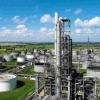The normal practice in the design of forced-convection reboilers is to calculate the heat transfer coefficient assuming that the heat is transferred by forced convection only. This will give conservative (safe) values, as any boiling that occurs will invariably increase the rate of heat transfer. ...............................................
...............................................
The critical flux in forced-convection boiling is difficult to predict. Kern (1950) recommends that, for commercial reboiler designs, the heat flux should not exceed 63,000W/m2 (20,000 Btu/ft2h) for organics and 95,000W/m2 (30,000 Btu/ft2h) for water and dilute aqueous solutions. These values are now generally considered to be too pessimistic.
After reading this I'm confused as to what value I should use as maximum critical flux for the design of the Forced-Circulation Reboiler for my design project.
I hope some forum member can share the maximum critical flux value for the design of Forced-Circulation Reboilers in the modern industry.
The book "Chemical Process Equipment Selection and design by Couper, et al" states that the work by Polley in following book provides the design procedure for Forced-Circulation Reboilers:
"Developments in Heat Exchanger Technology- Editor: Duncan Chisholm (1980)"
Thus, I guess its chapter "Reboilers" should contain some updated info regarding the maximum critical flux for the design of Forced-Circulation Reboiler.
I can't access this particular book by Duncan Chisholm as my university library doesn't have it.
I hope some forum member can check that book.
Edited by student88, 19 April 2012 - 08:16 AM.

 FB
FB













